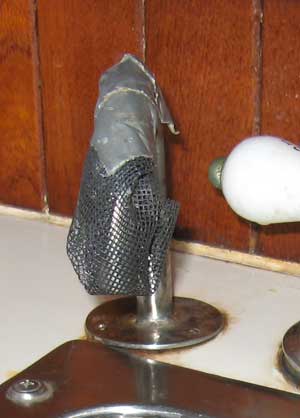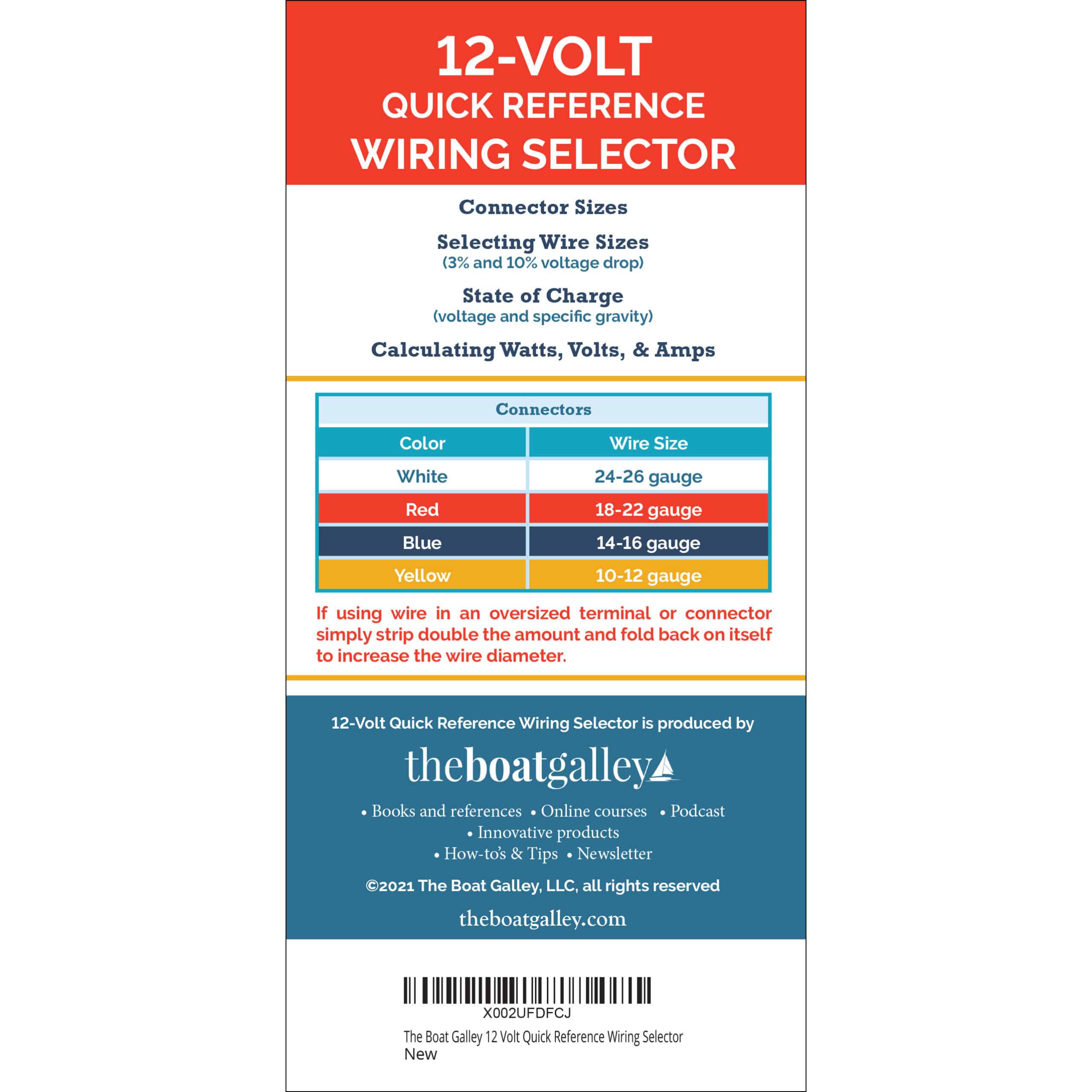Every boat has an air vent somewhere for the water tank. And bugs soon learn that they can get a drink from these. In the Sea of Cortez, where we spent a lot of time, it was bees that were looking for fresh water. Cruisers in other areas have told me of problems with mosquitoes, ants and moths.
Tank Air Vents
On most boats that I’ve been on, the air vent is the overflow spigot located by a sink. This is the spigot you watch when filling the water tank to see when the tank is full. But it’s also possible that the air vent is on deck somewhere or, on occasion, in the bilge. On our boat, it was a spigot in the head.
For some reason, these vents are often made without a screen over the opening, which most regular faucet spigots do have. And thus the bugs can not only get a drop of water right at the opening of the air vent/overflow spigot, but they can crawl inside.
Some will make it into the tank, where they most likely drown. And others may get stuck in the vent and die right there. That’s how we even discovered this problem.
Trouble with Thirsty Bees
We were in an anchorage where there were bees. They had come to the boat looking for fresh water. We knew this as they were all around a bucket that had a few drops of fresh water in it. And were they were almost fighting over each individual drop of water in the bottom. We knew from past experience that they wouldn’t sting us if we didn’t bother them and they’d leave at sunset.
We got the boat closed up and shoo’d out the few bees that had come inside with several mosquito coils. I didn’t really think any more about it other than to plan to move to a different anchorage at first light, before they came back.
As I was cooking dinner, I needed water and turned on the galley faucet. KA-BOOM! No air was getting into the tank to offset the water I was taking out. Basically we had an air lock – and the tank walls were sucked in. The sound was unmistakable as the metal tank flexed. Dave and I looked at each other in surprise and I quickly turned the water off. How in the world could we have an air lock in the water tank?
A Clue to the Cause
The first clue as to the problem was the back end of a bee sticking out of the overflow spigot. We assumed that one had gotten in there and gotten stuck, and he had blocked the air. We removed him with a pair of tweezers and tried running water again. Nope, we still had the problem. We pulled more bees out. Then I used a pipe cleaner to clear the bend in the spigot where we couldn’t reach with tweezers. It seemed that quite a number of bees had gone up the spigot. Eventually, we got the entire vent clear. Once done, the tank popped back into its normal position when air finally got through.

I’m sure there were bees in the tank. But they wouldn’t show up in our drinking and cooking water, thanks to our water filter. It also removed microscopic traces of them as well as any bacteria that might accompany them. And the screens on our regular faucet would catch any “bug parts” in the water we used for other purposes. We had to clean them out several times over the next few weeks. YUCK!
Solving the Problem
We did not want to have to deal with this again. So how to prevent the problem in the future? Obviously, if it had happened once, it could happen again. Lots of anchorages had bugs that would come aboard for a drink and we couldn’t totally seal the boat up 100% of the time.
We came up with a very low-tech and cheap solution: a piece of mesh screen duct-taped over the spigot. In doing this, you have to be careful that there aren’t any un-taped gaps where the mesh is pleated around the spigot, or bugs will still get in. They’re extremely resourceful!
I’ll admit that this is not the prettiest installation – but it works. Cruiser Bill Hess suggested – “For outboard vents use an in-line cheap see through fuel filter, the kind they use on lawn mowers. If your inside vent is large enough use the same but hold it in place with some 4200 caulk.”
That’s just one way to make the solution look nicer. Feel free to suggest your method in the comments.
If you’re not 100% positive that your tank air vent has a screen already incorporated into it, go check it now — before you have a problem. And if it doesn’t have a screen, tape a piece of mesh screen over it!
Related Posts

Carolyn Shearlock has lived aboard full-time for 17 years, splitting her time between a Tayana 37 monohull and a Gemini 105 catamaran. She’s cruised over 14,000 miles, from Pacific Mexico and Central America to Florida and the Bahamas, gaining firsthand experience with the joys and challenges of life on the water.
Through The Boat Galley, Carolyn has helped thousands of people explore, prepare for, and enjoy life afloat. She shares her expertise as an instructor at Cruisers University, in leading boating publications, and through her bestselling book, The Boat Galley Cookbook. She is passionate about helping others embark on their liveaboard journey—making life on the water simpler, safer, and more enjoyable.
Your VHF can do so much! Learn how to use ALL its features for just $39:












Carolyn Shearlock says
Of course that would be better! Somehow, neatness just wasn’t a concern that day 🙂
Jackie says
I know how silly and sentimental this sounds, but as a beekeeper, this made me sad😏 Crazy I know. You tend to get attached to the hive 😃
Carolyn Shearlock says
I’m sure it’d work just fine.
Carolyn Shearlock says
Is there any sort of an access port so you can get inside it to check that nothing has gotten in and also to scrub it down? If water is constantly being left in it between uses (and some in the hoses), it could be that it’s just “old water” too.
Michelle Kelly says
No, no way of getting in it. We have changed all the hoses too. Should we drain it after every trip? How long does it take for water to go bad? There’s an access opening and I can see the tank but there’s no access to the inside of the tank. The hole in the floor isn’t big enough to pull it out either. And we’re not ready to tackle that project yet. Thanks! Will have to see about getting the book mentioned below!
Dave Skolnick (S/V Auspicious) says
Buy “Getting Rid of Boat Odors” by Peggie Hall. No question that book is the single best resource for keeping your boat fresh smelling.
Carolyn Shearlock says
Yes, if the vent is large enough. On many tanks, such as those on both our boats, it’s just too small and so screen over the outside works better.